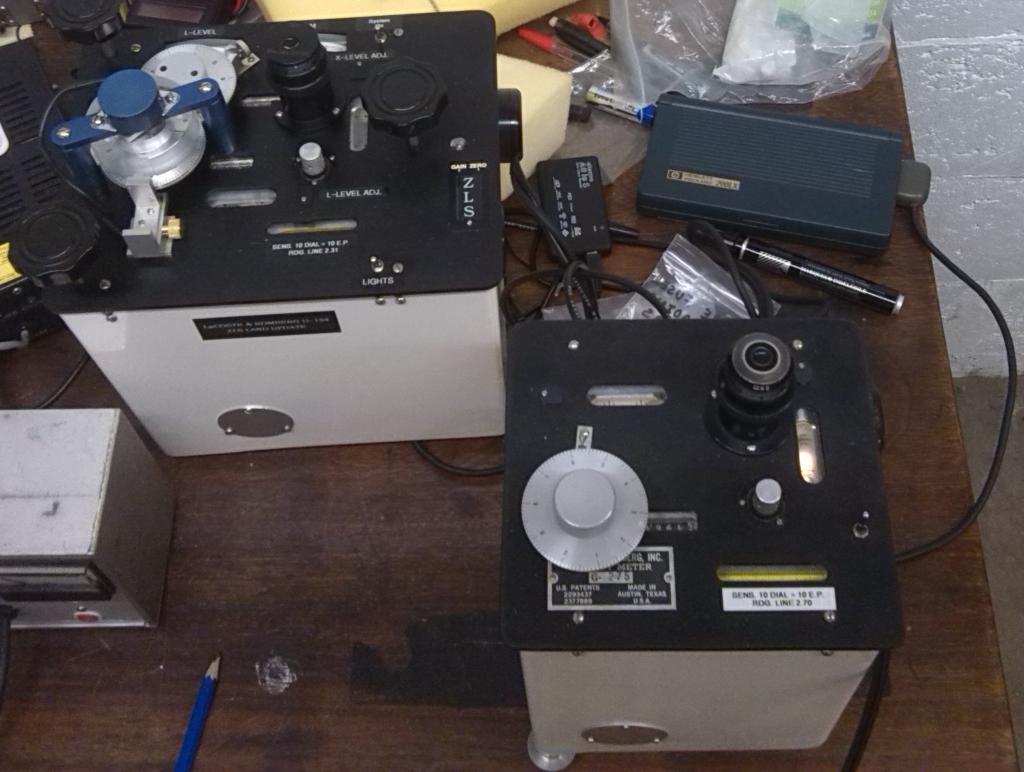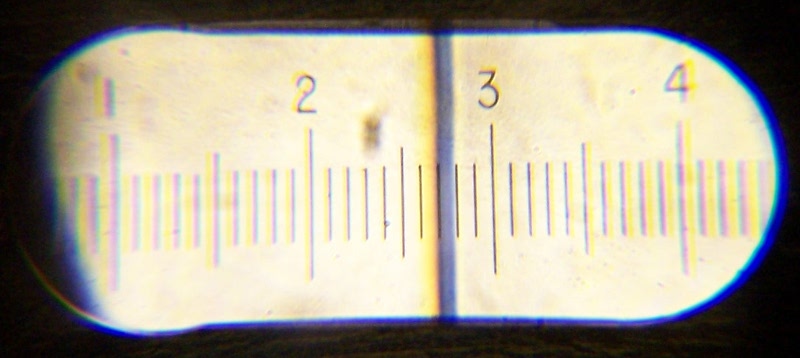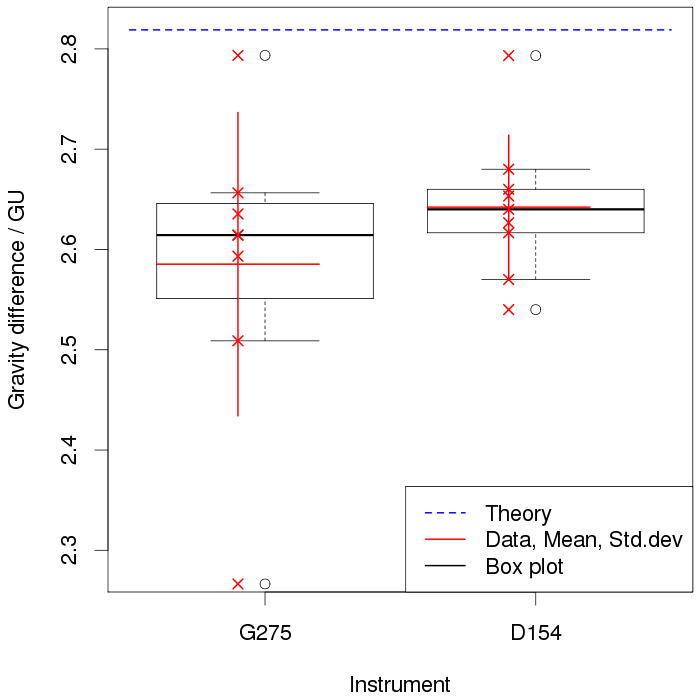One of the odd jobs that I have ended up doing is the care and maintenance of our gravity meters. We are lucky to have these instruments; they are very long-lived and a new one would be a very expensive purchase. The fact that we have three in working order is largely because one of my predecessors needed them for a research project.
Here are two of them, sitting on their bench in the secret gravity den. The third one is currently on loan to Imperial College for their field course.
The little one (bottom right in the picture) dates back to 1971; the chap who bought it told me that it cost as much as the house that he bought in the same year. (I like to remind myself that I was 7 years old at the time, and that Led Zeppelin were busy recording Stairway to Heaven. Inflation has affected houses much more than gravity meters in the intervening years.) The serial number of this instrument is G-275; serious gravity bores always want to know exactly which instrument was used to collect a particular set of data. We had G-275 serviced a couple of years ago by ZLS. When it came back we were able to demonstrate very quickly that it was working well — the only equipment needed to use it are a good eye, a steady hand, a pencil and a notebook. A reading is taken by squinting down the eyepiece, where you see this:
You then twiddle the big silver dial until that fat black line is at exactly the right point on the scale (2.7 for this instrument) and write down the number of dial turns from the counter and the scale on the dial. This all works just as well now as it did in 1971.
The larger instrument on the left, D-154, is a different story. We had this serviced, again by ZLS, just last year. This instrument has an upgrade fitted by ZLS in the 1990s, allowing it to be read by a computer. The computer in question is the HP200LX palmtop in the top right of the first picture. Its operating system is MS-DOS; a program provided by ZLS is used to operate the instrument. The 1990s may seem recent compared to 1971, but it was an era before computers had USB ports. The only way to get data in and out of the palmtop is via a PCMCIA slot. And when I got it, the only memory card I had that would fit in the slot was difficult or impossible to read with a modern computer.
It was fairly easy to obtain a PCMCIA adapter that took a CompactFlash (CF) card, and very easy indeed to obtain a USB to CF adapter. But the HP200LX will not read newer CF cards like the nice new one I bought. I was reduced to spamming the entire School of GeoSciences to beg my colleagues for any old, low-capacity CF cards that they might have had in the back of a drawer. Fortunately, a small pile of such cards was forthcoming, with a number of kind colleagues contributing. And the HP200LX condescended to read at least half of them. So I was good to go, and moderately future-proofed.
My initial attempt to compare the two gravity meters suggested that D-154 was working OK, but the data from it showed rather a large scatter. A bit of experimentation demonstrated that this was because if you let the instrument operate for more than 200 seconds it stops trying to do a proper job and just gives you the answer that it had obtained up to that point. Having got the hang of this, I used the two instruments in the picture to measure the difference in gravity between the floor of the gravity den and the bench. In a flat area, away from the influence of buildings, the vertical gravity gradient should be about 3.085 GU per metre. The bench is 0.914m tall, so the difference would be 2.82 GU. (A gravity unit (GU) is 10-6 ms-2 or about one ten millionth of the total gravity.) My results are shown in this plot, with the theoretical value marked in blue.
The actual data are the red crosses: each cross is the difference between the average of three individual measurements on the floor and the average of three taken on the bench. The red horizontal line is the mean value and the vertical line extends one standard deviation either side of it. The black parts are a summary that statisticians are fond of, called a box and whisker plot. The central black line is the median of the data and the box contains the second and third quartiles of the data. The whiskers go out to the furthest point that is less than 1.5 times the box width from the box. Any outlying points are marked individually as circles.
I am reasonably convinced that the two instruments agree with each other for this particular measurement and that the computer-controlled instrument produces more consistent results than I can achieve using the manual instrument. The measured value is less than you would predict from simple theory, presumably due to the distribution of mass in the building and its surroundings. I’m looking forward to trying D-154 out in the field when we go to Derbyshire in September.





3 Replies to “Gravity: the vintage gear keeps on working”